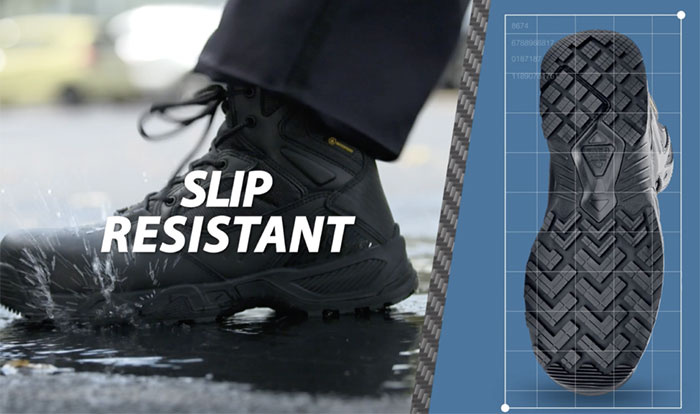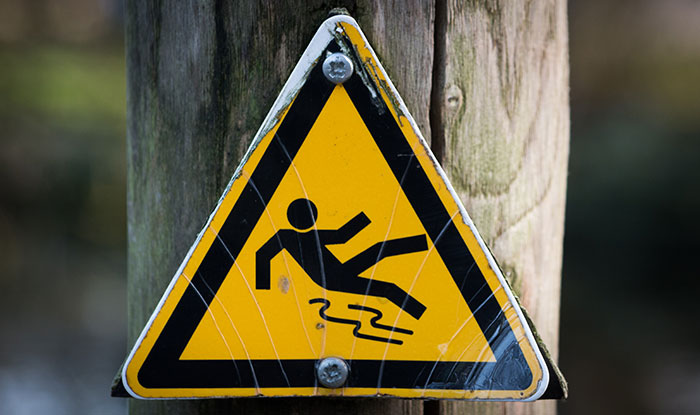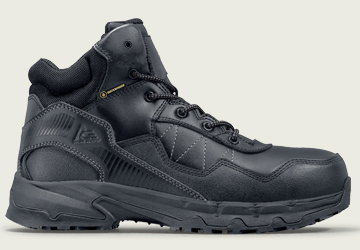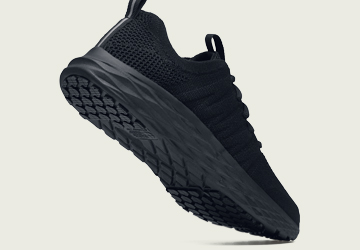The Difference Between Waterproof vs Water‑Resistant Shoes
When hunting for non‑slip work shoes, you've probably seen waterproof and water‑resistant used interchangeably, but they aren’t the same. Understanding the difference can protect your feet, improve performance on the job, and keep you safe.
What Water-Resistant & Waterproof Actually Mean
- Water‑Resistant: These shoes resist light moisture—think drizzle, spills, or splashes. They are made from treated leather or nylon blends that block water temporarily but aren’t built to hold back moisture for long.
- Waterproof: This term means impenetrable. Waterproof work shoes use sealed seams, rubber or vinyl shells, or specialized membranes to keep every drop out, even during heavy rain or standing water.
Simply put: water‑resistant keeps you dry most of the time; waterproof keeps you dry all the time.
Choosing the Right Protection for Your Job
• When to Go Waterproof
- High‑risk wet environments (food processing, industrial cleaning, outdoor sites)
- Roles involving long exposure to standing water, hoses, chemicals
- When OSHA or your employer mandates waterproof protection
- Considerations:
- These shoes seal moisture out — but can trap sweat. In warm, active roles they may feel damp internally
- Maintenance matters: check membranes and seams regularly
• When to Opt for Water‑Resistant
- Moderate wetness: indoor spill zones, light rain, occasional splashes
- Ideal for waitstaff, retail workers, office-to-floor roles, or entry‑level outdoor exposure
- Benefits:
- Lightweight, breathable, flexible—keeps your feet comfortable and dry
- Easier maintenance—just wipe or apply spray occasionally
• Balance Breathability vs Total Protection
Water‑resistant shoes often outperform waterproof non-slip shoes when comfort matters, especially in warm environments. Waterproof slip-resistant footwear may sacrifice airflow even when it excels at moisture protection.
• On the Job: Real‑World Examples
Food processing or industrial roles: You want full waterproofing—no exceptions. Look for seam-sealed waterproof boots. For example, the Shoes For Crews Piston Mid Boot uses waterproof leather plus our proprietary slip‑resistant soles—perfect for delivery drivers, janitorial, and maintenance crews.
Restaurant, retail, general workplace: Water‑resistant is smarter—breathable and designed for everyday comfort. For example, our Everlight lightweight waterproof sneakers use breathable, water‑resistant textile fabric—the perfect water-resistant kitchen shoes for cooks, servers and hospitality staff.
Spotting the Difference in Seconds
Waterproof Signs:
- Seam‑sealed or fully built from rubber/vinyl
- Labeling: “Waterproof”
Water‑resistant Signs:
- Made of treated leather, nylon, polyurethane, neoprene
- Tag or product info reads “water‑resistant”
Tips to Extend the Life of Your Shoes
- For Water‑Resistant Shoes: Clean regularly and apply treatment sprays (wax or silicone-based). Adds months of protection
- For Waterproof Shoes: Inspect seams, membranes, soles for wear. Repair promptly to maintain protection
Final Takeaway
Choose based on your environment and your comfort.
- If it’s heavy-duty liquid exposure or safety‑mandated, go waterproof. Seams must be sealed with membranes intact.
- If it's split floors, occasional spills, light rain, pick water‑resistant—you’ll stay dry, comfy, and agile.
Making the workplace safer—one step at a time. Explore our selection of both water-resistant safety footwear and best waterproof work boots to find the perfect fit for your daily grind.
Employees and Your Bottom line.
Don't Forget To Share This Post!

The Key to Slip-Resistant Safety Shoes
Not all slip-resistant shoes for workers are equal. Find out how genuine slip-resistant footwear carries a high Coefficient of Friction (COF) score.

Workplace Safety 101: Preventing Slips, Trips and Falls
Preventing slips, trips, and falls is Workplace Safety 101 and of the utmost importance. SFC Safety explains how everyone can ensure a safe work environment.

How to Create an Accident Incident Rate Benchmark
How does your company stack up to the national injury incident rate averages? Learn how to calculate accident ratios to benchmark new safety guidelines.

